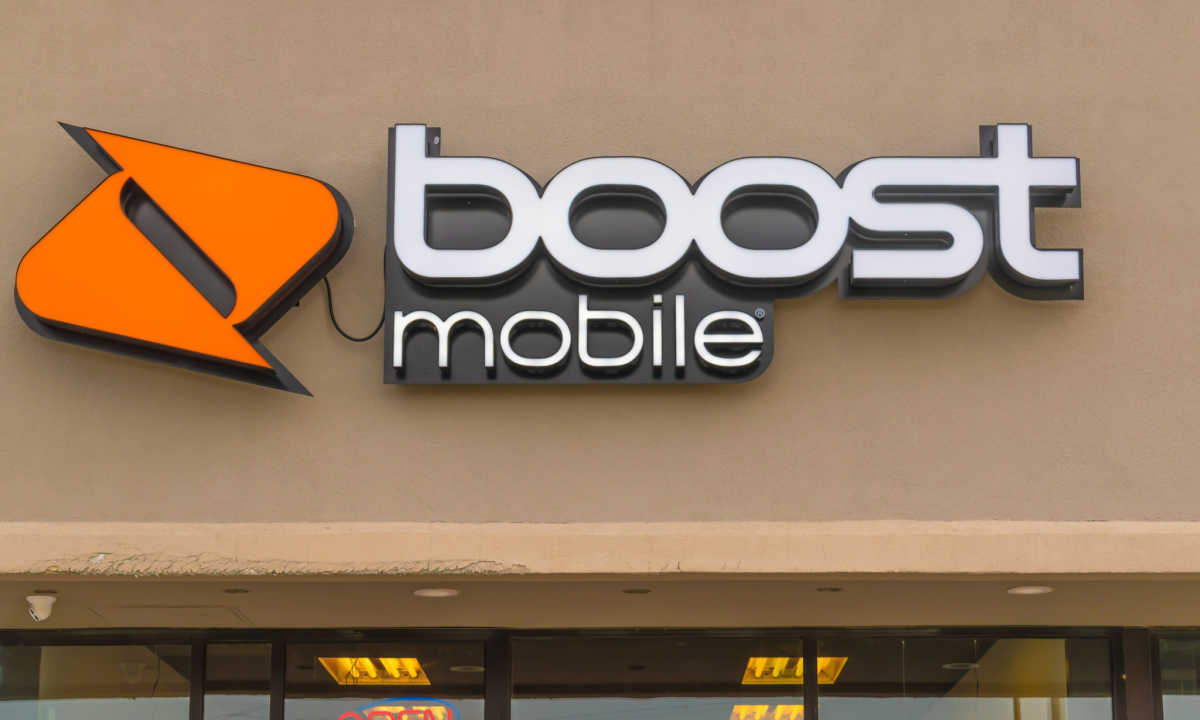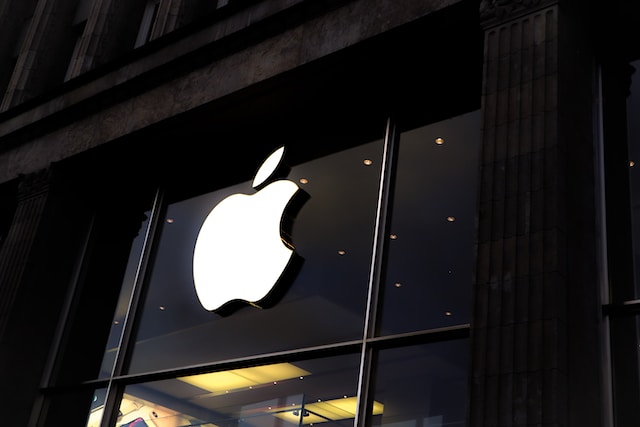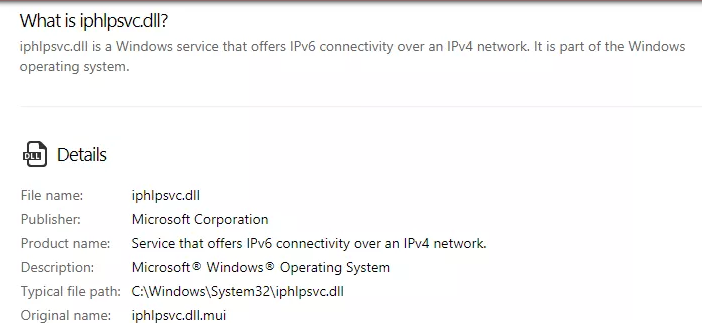NEWS
Dish’s Boost Mobile Network Will Be Shut Down by January 2022, According to Dish

dish fcc tmobile cdma dish mobilefriedaxios Dish’s Boost Mobile is a great way to get the most out of your Dish satellite TV service. However, Dish is complaining that T-Mobile is rushing to shut down the CDMA network that Boost Mobile uses. Currently, T-Mobile plans to shut down its CDMA network by January 2022, according to Dish. This is a problem because millions of Boost Mobile customers still use the CDMA network, according to Dish.
T-Mobile plans to shut down its CDMA network in January 2022
Earlier this month, T-Mobile revealed that it plans to shut down its CDMA network by January 2022. The company said that it needs to do so in order to increase the amount of bandwidth available for its new 5G broadband network. It has begun sending emails to Sprint customers, informing them of the change.
According to T-Mobile, the delay will give partners “every opportunity” to meet their obligations. Despite this, T-Mobile has not confirmed why the delay has occurred. Previously, T-Mobile told regulators that it would keep the network running until 2023. However, internal T-Mobile documentation sets the shutdown date for the 3G UMTS network at October 2021.
According to T-Mobile, it has given Dish Network “enough time” to transition its legacy customers to T-Mobile’s network. Dish also cited “supply chain problems” and “COVID-related issues” as the reason for the delay. However, T-Mobile says that the delay will not materially change the company’s plans.
The company says that its new 5G broadband network will provide broadband speeds that are “100 to 300 times faster” than the network currently provides. Customers who switch to 5G will also benefit from enhanced public safety. This could include home security systems, medical devices and more.
T-Mobile has also informed Dish that it plans to shut down its CDMA 3G network by January 1, 2022. Dish has argued that this would cause millions of customers to lose access to service. However, T-Mobile has defended its decision, saying that the company has given Dish enough time to transition its customers.
T-Mobile has also stated that it will offer its customers free 5G handsets. However, customers who currently have a phone that does not support VoLTE (Voice over LTE) will not be able to make calls after the network is shut down. T-Mobile has urged customers with old phones to buy new devices instead. If they can’t afford to buy a new phone, they can upgrade to a better Android phone for free.
The company has said that it will redirect CDMA calls to customer care. However, customers should make sure that their new phones support VoLTE.
Dish complains that T-Mobile is rushing to shut down a network that millions of its Boost Mobile subscribers still use
During the last quarter, Dish lost 67,000 TV subscribers and 362,000 wireless subscribers. The company continues to hemorrhage money from its sagging satellite TV business. It’s no secret that Dish is unhappy with its primary network partner T-Mobile. Dish claims T-Mobile has been acting shady and anti-competitive.
Dish Network recently wrote a letter to the Federal Communications Commission (FCC) regarding its concerns with T-Mobile. The letter highlights various issues, including the impending closure of the Sprint CDMA network, which millions of Dish’s Boost Mobile subscribers still use.
Dish says it’s been told by T-Mobile that its legacy CDMA network will be shut down in January of 2022. That’s nine months away, and Dish says it won’t be able to meet the deadline, due to device shortages. Boost Mobile is a prepaid wireless brand that was originally part of Sprint. Boost retained millions of 3G customers when T-Mobile bought Sprint’s parent company. But Dish believes the shutdown will harm those customers, who still use the Sprint CDMA network.
Dish is also concerned that T-Mobile has been pushing for policies that will benefit small providers. It also believes T-Mobile has been flip-flopping on spectrum issues. Previously, T-Mobile supported the use of diversified spectrum ownership. But now it has taken a more conservative approach.
Dish also complains that T-Mobile is rushing to close its legacy network, which millions of Boost Mobile subscribers still use. It says that T-Mobile isn’t honoring its merger agreements, and has become a “carrier-like” company. The company is also concerned about T-Mobile’s aggressive timeline, which would cause “forced migration” for millions of Boost customers.
T-Mobile and Dish were meant to work together closely after the merger. Dish acquired Boost’s subscribers to help seed its new wireless business. However, the two companies haven’t been able to work out their issues. This is why Dish has turned to regulators for help. They are currently awaiting a decision from the FCC.
Dish and T-Mobile are also fighting over the transition to a 5G wireless network. The dish is a newcomer to the mobile broadband market but is relying heavily on T-Mobile’s legacy CDMA network to serve its customers.
AT&T will become a primary network for Dish MVNO customers
Earlier this year, Dish Network announced a 10-year network services agreement with AT&T. The deal will allow AT&T to use part of DISH’s licensed spectrum in various markets. It will also provide AT&T customers with access to Dish’s future 5G network.
The agreement is worth at least $5 billion, according to Dish. It is also not an exclusive deal, meaning that AT&T will also provide service to customers of Ting, Republic, and other carriers. AT&T also plans to provide transport services to support Dish’s 5G network.
Despite the deal, Dish still has to build out wireless facilities that cover at least 70 percent of the US population by 2025. It will have to provide a minimum percentage of its MVNO customers to AT&T.
In addition, Dish has to build out an open RAN-based 5G network to cover at least 70 percent of the US population. It will also have to provide broadband service to customers who ask for it. It also has to work with AT&T and other customers to improve the quality of its network during the transition period.
As part of the deal, AT&T will provide service to Dish’s retail wireless brands, including Boost, Xfinity, and Republic. AT&T will also provide service to Dish’s Internet service providers, including MetroNet, LightShed, and Ting. Dish also has committed to activating on AT&T’s network certain MVNO subscribers in the US who receive services through a third-party network.
AT&T has invested more than $140 billion into its wireline and wireless networks. It has plans to replace its 3G GSM network with 5G by February 2022. The agreement also includes in-market roaming. It will allow Dish’s MVNO customers to use the AT&T network in the US and will provide roaming services to support Dish’s 5G future network. AT&T has also invested in operations and network capacity.
AT&T will be the primary network services partner for Dish’s MVNO customers. AT&T will also provide transport services to support Dish’s future 5G network and will provide roaming services to support its customers. It is also the first network service partner for Dish’s Boost Mobile customers.
Verizon revealed recently that only 1% of its customers remain on CDMA
Earlier this month, Verizon revealed that only one percent of its customers remain on its CDMA network. In the meantime, the company is providing free 4G flip phones to its 3G customers. While the move may sound good, there are concerns about the quality of Verizon’s service and the way it will affect consumers. Ultimately, the company plans to retire its 3G network by the end of 2022.
The company also claims to be the only cellular provider in Vermont with a competing GSM network. The company is attempting to transition its GSM customers to CDMA when it is ready. This would enable the company to gain access to rural areas and expand its national footprint. Ultimately, the company will save money through efficiencies and enhanced economies of scale.
However, RCC’s existing GSM customers have raised concerns about local customer service and affordable no-contract rate plans. In addition, they have expressed concern about Verizon Wireless’ ability to offer comparable phones on its CDMA network. In light of these concerns, the Joint Petitioners request the Commission to require Verizon Wireless to maintain its GSM network for six years. In addition, they ask the Commission to require detailed information about Verizon’s customer transition plans. The petitioners also request that the Commission take action to address public interest issues relating to the proposed acquisition of West Virginia Wireless.
Verizon Wireless has pledged to divest RCC’s cellular operations in Vermont markets. It has also committed to maintaining its properties for at least 120 days. The company could sell its assets to a third-party buyer, or it could sell them to the divestiture trustee. In addition, the company has agreed to divest its CMAs in New York 2-Franklin and Vermont 2-Addison CMAs. In the 2-Addison CMA, Verizon Wireless will retain RCC’s cellular system in the southern half of the CMA.
However, the company’s proposal to convert RCC’s cellular licenses to CDMA technology will allow the company to take over the entire RCC network. It would also give the company the ability to expand its wireless broadband services. In the 2-Addison CMA, the company would compete head-to-head with U.S. Cellular, a Verizon competitor. The company could alter its behavior or raise prices. In addition, it would have the ability to degrade Vermont’s only GSM network.
Tmobile CDMA dish boost mobilefriedaxios
Dish Network complained in a petition to the FCC on Thursday that its cellular service provider T-Mobile is racing to shut down a network that millions of Dish’s Boost Mobile subscribers still use.
Why it matters: T-Mobile was only permitted to buy Sprint after agreeing to sell a number of assets to Dish, including its Boost prepaid division. Additionally, while it builds up its own 5G network over the next years, Dish is heavily dependent on T-Mobile for network services.
Driving the news: Although Dish’s letter to the FCC covers a number of issues, the closure of the CDMA network, which was once used by Sprint and is still used by the bulk of Dish’s 9 million Boost Mobile customers, is the main one.
T-Mobile promised to offer network services as part of the sale of Boost to Dish, but it made no commitments on how long it would keep running the CDMA service (Sprint’s legacy network).
According to sources familiar with Dish’s thinking, Dish had anticipated that T-Mobile would eventually seek to shut down that network in three to five years. Sprint, however, said in the latter part of last year that it will attempt to close it down much earlier, on Jan. 1, 2022.
What they’re saying: Dish wrote in the letter, “A forced move of this size under this expedited time frame is just not viable and may likely leave millions of Boost consumers disenchanted and without mobile coverage by January 1, 2022.
It also pointed out that Verizon, whose CDMA user base is under 1%, has repeatedly postponed its closure and now intends to do so in 2023, one year after T-Mobile.
There was no one from T-Mobile accessible to comment right away.
Between the lines: The controversy is significant because Dish will depend heavily on T-Mobile for network services for the foreseeable future as it develops its own 5G network. (Dish anticipates launching its own 5G service in its first city this year; the countrywide roll-out will take some time.)
Our thought bubble: Considering how dependent Dish is on T-Mobile, it makes sense to assume that a public argument was not the company’s first line of action and that Dish only approached regulators after failing to persuade T-Mobile to postpone the network shutdown.
NEWS
woodgrain my tools

Are you looking for information on woodgrain my tools? You have come to the right place! In this blog post, we will provide a step-by-step guide on woodgrain my tools
Woodgrain Login
Power Tools – Woodgrain
www.mytoolswoodgrain.com/
Mytools Woodgrain Login – MetaBenefit
woodgrain mytools – WOW.com – Content Results
Mytools woodgrain
Woodgrain Tool – Available At Blue Star Antiques
Mytools woodgrain com
Mytools woodgrain millwork
Mytools Woodgrain
Mytools woodgrain
Woodgrain Tool – Available At Blue Star Antiques
How To Use A Wood Grain Tool: It’s So Easy – Chas’ Crazy Creations
Wood Grain Rocker Tool – Heirloom Traditions Paint
Wood Grain Tool, 5Pcs Wood Grain Roller Soft Rubber Wood …
NEWS
Rajkotupdates.News : Work Permits for Indian Spouses of H-1B Visa Holders Approved by the U.S.!

Indian H-1B visa holders’ spouses, take note! Newly released information is exciting: the United States has issued work permits to eligible individuals, allowing them to pursue their professional goals and contribute to the economy.This is a monumental shift that has the potential to profoundly affect the lives of tens of thousands of people across the country. Prepare yourself for the most recent rajkotupdates.news report!
What Exactly Are Work Permits?
- Spouses of U.S. citizens from outside the U.S. who are sponsored by their sponsors and who meet other criteria can apply for work visas.
- Spouses from outside the United States can get work permits to lawfully work in America. Furthermore, they are permitted to remain for longer than visitors who are not immigrants.
- US Citizenship and Immigration Services (USCIS) documentation and an interview may be required to secure a work visa, but the process is otherwise simple.
- After you obtain your work permit, you must provide it when you apply for a visa or request entry to the United States.
To Whom Do Work Permits Apply?
If your spouse is in the United States on an H-1B visa and you are an Indian citizen, you may be eligible for a work permit.
The following conditions must be met before you can apply:
- You and your American spouse must be more than just dating.
- Your U.S. companion must hold a current H-1B visa.
- You can’t get married if you cheated or lied about anything.
- You and your future spouse in the United States must have met beforehand.
- You need to prove that no American citizen or permanent resident is qualified for the position you’re applying for.
Your fourth step is to visit the U.S. Department of State’s Bureau of Citizenship and Immigration Services (BCIS) to apply for a work visa. Be sure to include all of the required paperwork with your application because the review process can take many months.
What Do You Need to Do to Get a Work Permit?
If you are Indian and married to a U.S. citizen, you might be eligible for a work visa.
- You must be financially stable in order to qualify for an H-1B visa.
- Have a representative of your own country’s government witness your wedding.
- Carry a valid passport. If you meet all of these requirements, then you can submit your application to USCIS. Your partner’s full name and U.S. address are required pieces of information.
- You’ll also need to present documentation that you have the means to support yourself financially and that you’re legally able to receive a work visa, such as a marriage licence. You may be eligible to file an appeal if you are denied a work visa.
How Do You Apply for a Work Visa?
The process of obtaining a work visa varies from country to country. In most cases, you’ll need to demonstrate that you’re capable of supporting yourself and your partner.
It’s possible that you’ll also need to provide evidence of your relationship status and health insurance coverage. In some countries, you need a visa before you can apply for a work permit.
After obtaining a work visa, what steps should one take?
- Submit an application for a change of status with the Department of Homeland Security (DHS) after obtaining a work permit.
- To begin the Adjustment of Status procedure, you must provide evidence of your marriage and establish that you otherwise qualify.
- If your status adjustment is approved, your spouse will be entitled to apply for an immigrant visa and join you in the United States.
Conclusion
Spouses of Indian citizens holding H-1B visas are now eligible to apply for work authorization in the United States. More qualified Indian workers may find employment in the United States as a result of this. The work permits would be valid for up to six years, allowing Indian nationals to compete for jobs that would normally be out of reach due to a lack of education, training, or experience. This is part of President Trump’s strategy to reduce the need for foreign labour and halt the influx of illegal immigration.
NEWS
After the developer of Amphetamine complained to Apple about the software being removed because of its name, the company ultimately decided to allow the Mac app have its present name and logo (William C. Gustafson / GitHub)

Amphetamine is a free application for the Mac that allows the user to configure how long the computer will remain awake. The 2014 release has been well received by users, with over 432,000 downloads and five-star ratings on the Mac App Store. MacRumors has previously highlighted the app as well. Amphetamine has been available on the Mac App Store for six years before Apple unexpectedly removed it for not following their rules.
After a representative from Apple contacted Amphetamine’s developer, William Gustafson, to inform him that the software will be withdrawn from the Mac App Store on January 12, 2021 if several adjustments were not made, Gustafson posted a lengthy report on GitHub describing the situation. The agent stated that the following condition was not met by Amphetamine:
Tobacco and e-cigarette, illegal drug, and excessive alcohol consumption-promoting apps are not allowed in the App Store. Any app that targets kids or encourages them to use illegal drugs or alcohol will be removed. Tobacco, marijuana, and other controlled substances cannot be sold, and neither can they be facilitated for sale outside of legal pharmacies. According to reports, the Apple official stated “It seems like your software encourages people to take drugs in the wrong way. In particular, your app’s name and image both make allusions to illegal drugs and medicines.” As amphetamine is available only with a doctor’s prescription in the United States, Gustafson said, it doesn’t encourage drug abuse. He added that the film does not advocate for the “irresponsible, illegal, or recreational” use of amphetamine.
Amphetamine (the app) can be used in the same way as amphetamine (the chemical molecule) can be used to keep humans awake and focused.
To counter the claim against the app, Gustafson filed an appeal and started a petition on Change.org, which has since received over 500 signatories. And just now, he tweeted that he had just gotten off the phone with the App Review Board and that Amphetamine would still be available in the Mac App Store. It’s surprising that Apple forced Amphetamine to change its name after they highlighted it in a Mac App Store Story and the software received 1,400 reviews on the Mac App Store. Gustafson also claims to have had numerous conversations with Apple’s App Review Team on Amphetamine, but this issue has never come up before; the cause of this is a mystery.
-

 Marketing1 year ago
Marketing1 year agoHow Often Should You Publish on a Blog?
-

 Technology1 year ago
Technology1 year agoIPHLPSVC Services Tuning? Windows 7/10
-

 Technology1 year ago
Technology1 year agoHow AI Can Transform Healthcare
-

 REVIEWS1 year ago
REVIEWS1 year agoBest Gaming Communities Like F95zone
-

 OUTDOOR1 year ago
OUTDOOR1 year agoColoring Black and White Photo at Home
-

 Technology1 year ago
Technology1 year ago5 Best React JS UI Frameworks for Swift Prototyping
-

 GAMING1 year ago
GAMING1 year agoPick N Mix: A Slots Adventure for Everyone
-

 REVIEWS1 year ago
REVIEWS1 year agoAll You Need to Know About KissAnime – Is it Safe and Legal?
